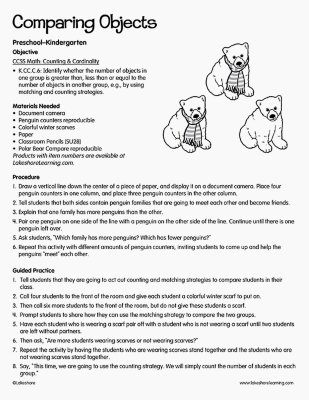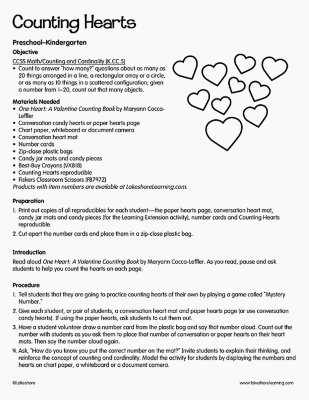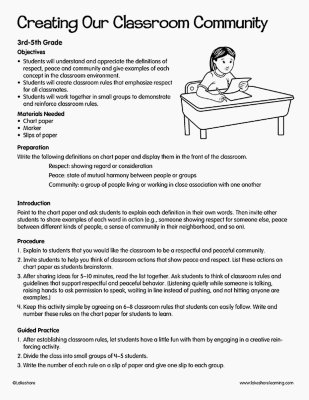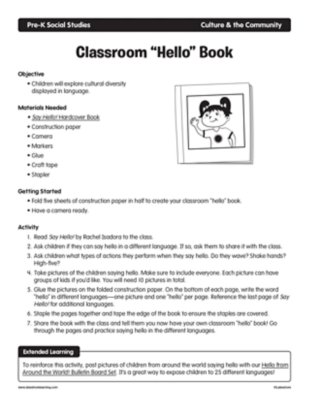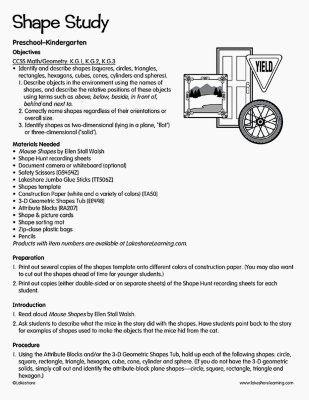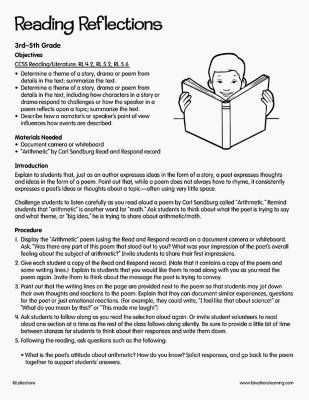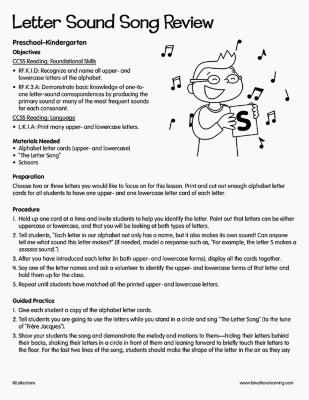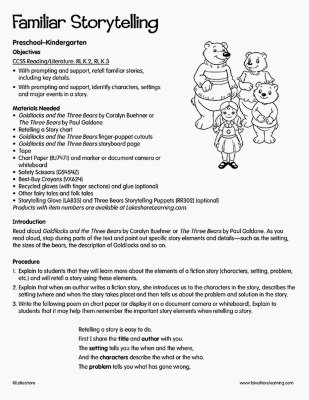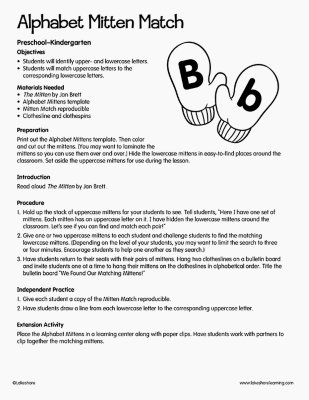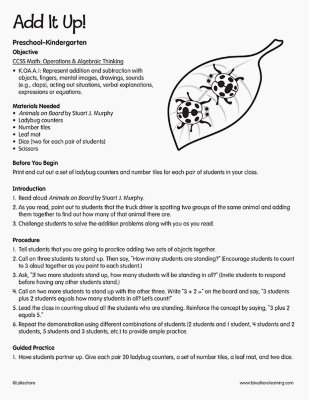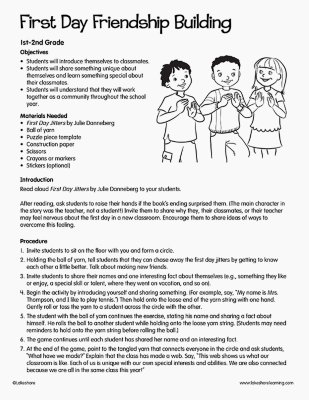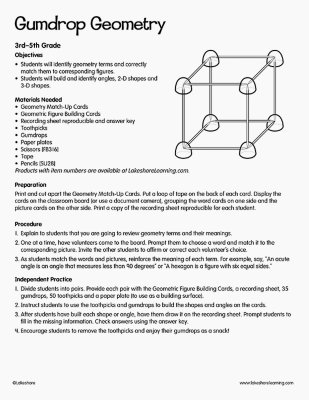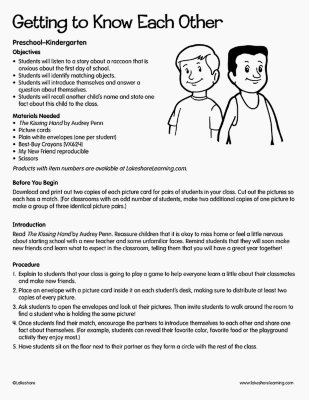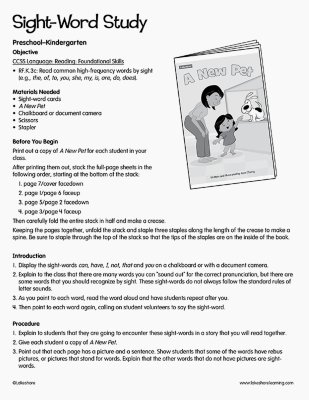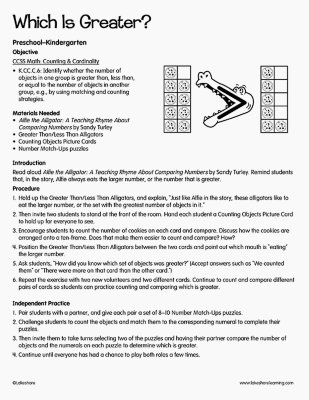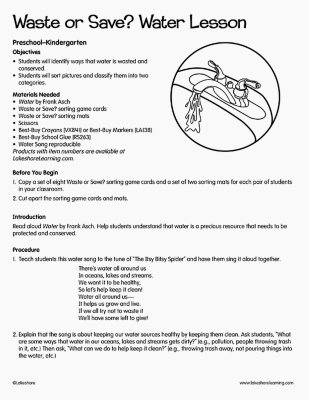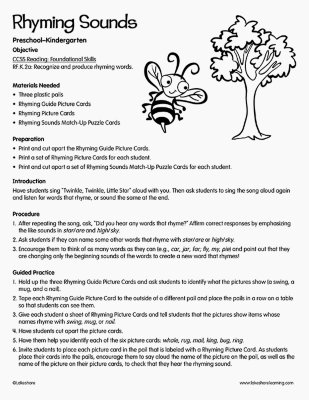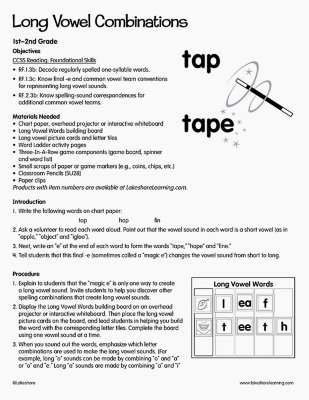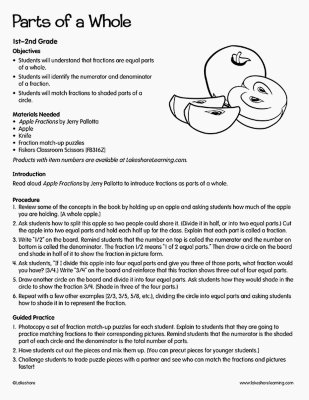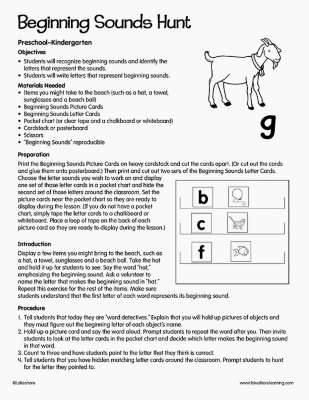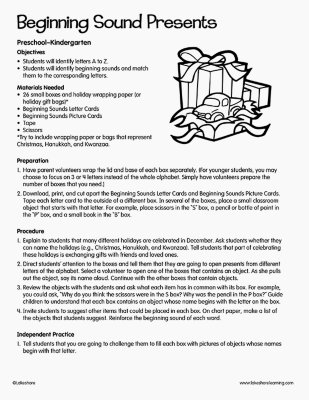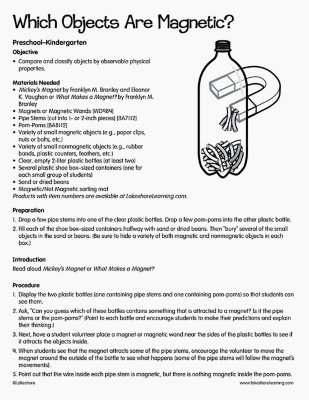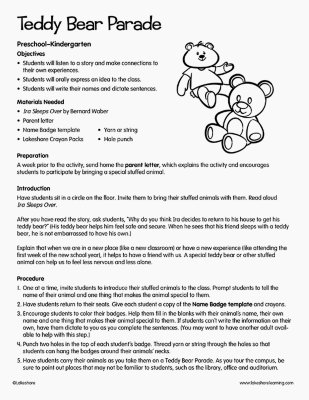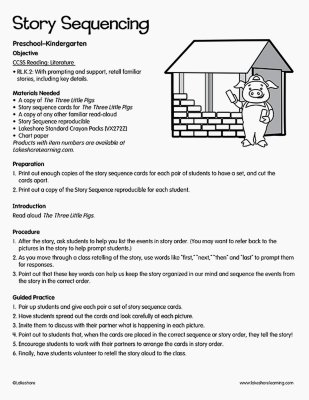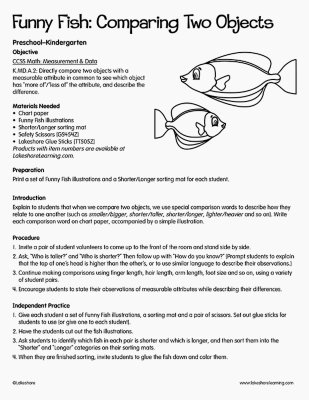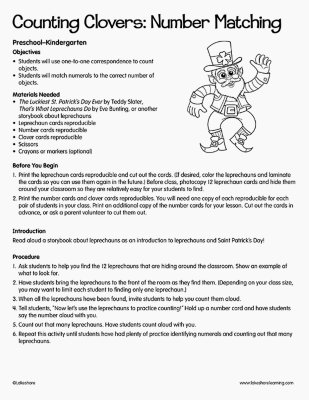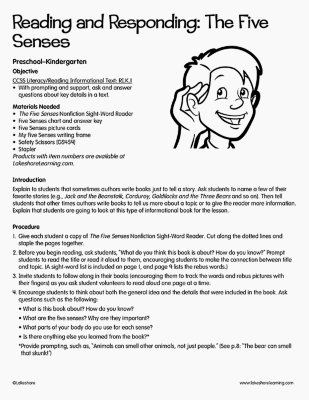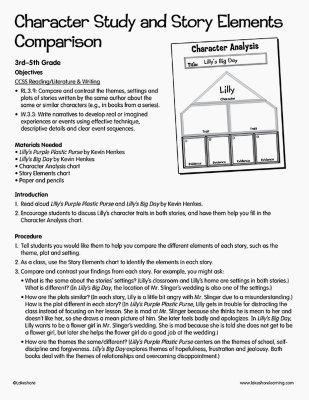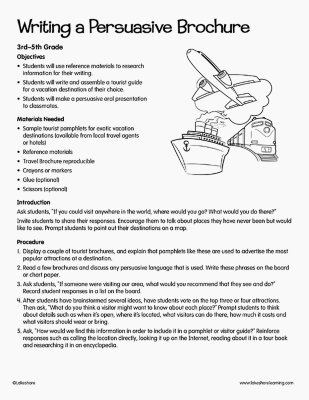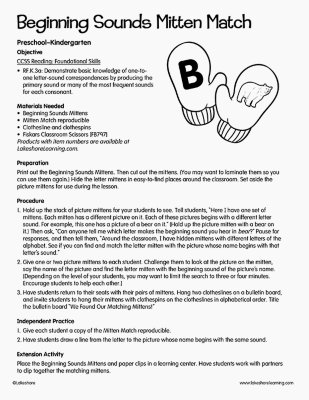
Objective CCSS Math: Counting & Cardinality K.CC.C.6: Identify whether the number of objects in one group is greater than, less than or equal to the number of objects in another group, e.g., by using matching and counting strategies. Materials Needed Document Camera Penguin counters reproducible Colorful winter scarves Paper Classroom Pencils Polar Bear Compare reproducible
View Lesson PlanObjective
Objectives CCSS Reading: Foundational Skills RF.K.1.D: Recognize and name all upper- and lowercase letters of the alphabet. RF.K.3.A: Demonstrate basic knowledge of one-to-one letter-sound correspondences by producing the primary sound or many of the most frequent sounds for each consonant. CCSS Reading: Language L.K.1.A: Print many upper- and lowercase letters. Materials Needed Alphabet letter cards (upper- and lowercase) “The Letter Song” Scissors
View Lesson PlanObjective CCSS Reading: Foundational Skills RF.K.2a: Recognize and produce rhyming words. Materials Needed Three plastic pails Rhyming Guide Picture Cards Rhyming Picture Cards Rhyming Sounds Match-Up Puzzle Cards Introduction Have students sing “Twinkle, Twinkle, Little Star” aloud with you. Then ask students to sing the song aloud again and listen for words that rhyme, or sound the same at the end.
View Lesson PlanObjectives Students will understand that fractions are equal parts of a whole. Students will identify the numerator and denominator of a fraction. Students will match fractions to shaded parts of a circle. Materials Needed Apple Fractions by Jerry Pallotta Apple Knife Fraction match-up puzzles Fiskars Classroom Scissors Introduction Read aloud Apple Fractions by Jerry Pallotta to introduce fractions as parts of a whole.
View Lesson PlanObjective CCSS Reading: Literature RL.K.2: With prompting and support, retell familiar stories, including key details. Materials Needed A copy of The Three Little Pigs Story sequence cards for The Three Little Pigs A copy of any other familiar read-aloud Story Sequence reproducible Lakeshore Standard Crayon Packs Chart paper Introduction Read aloud The Three Little Pigs.
View Lesson Plan
